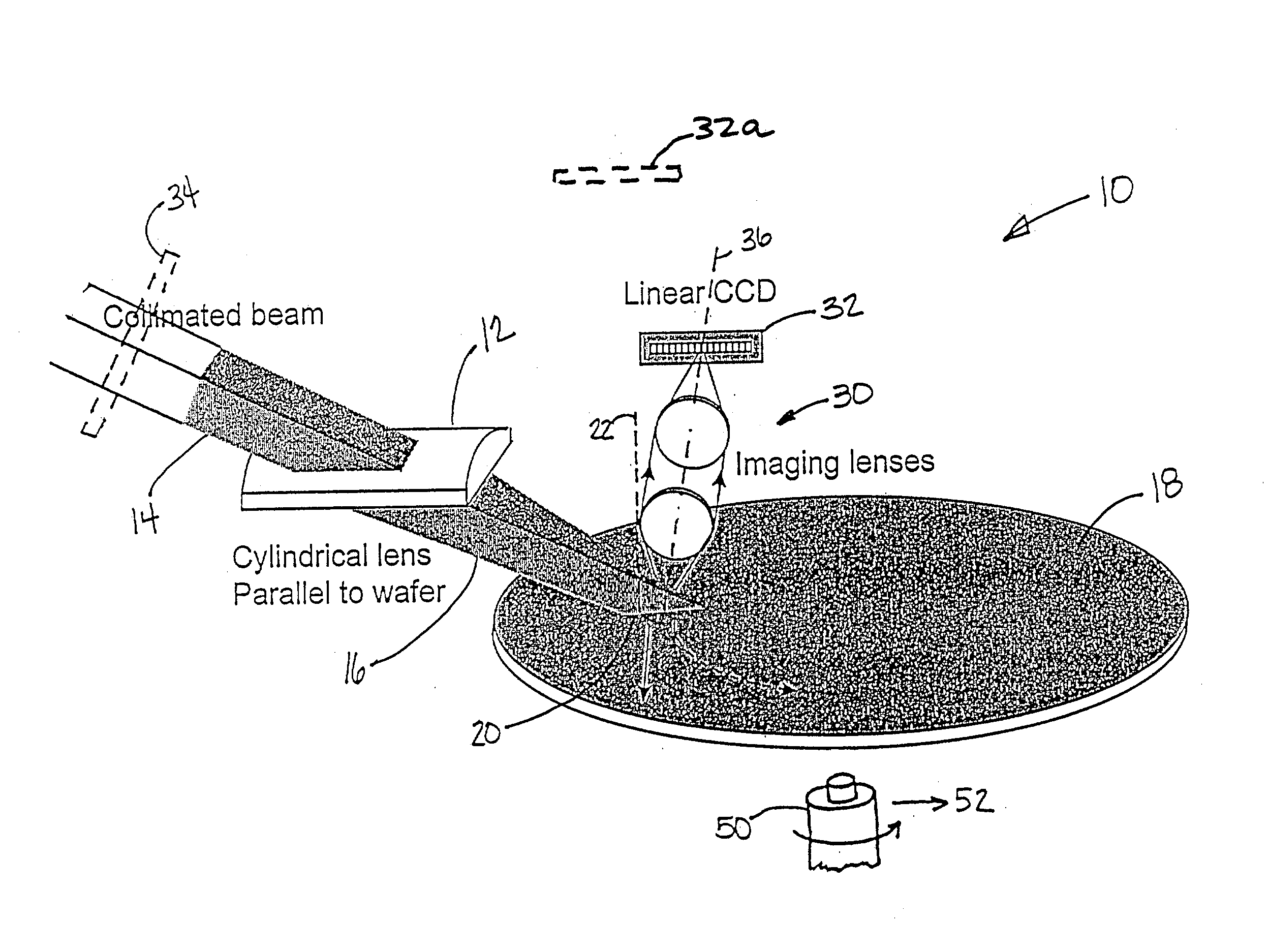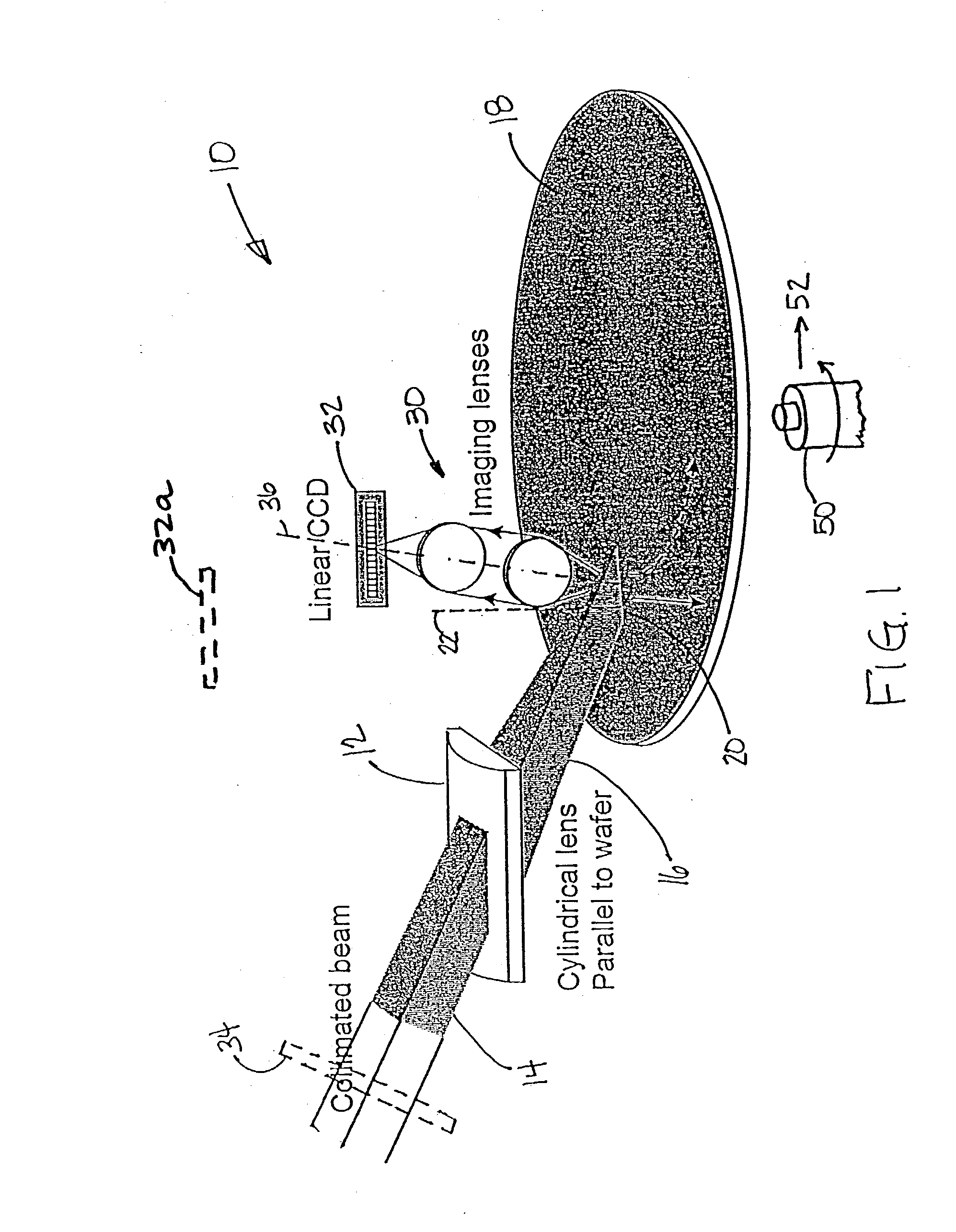System for detecting anomalies and/or features of a surface
- Summary
- Abstract
- Description
- Claims
- Application Information
AI Technical Summary
Benefits of technology
Problems solved by technology
Method used
Image
Examples
Embodiment Construction
[0038]FIG. 1 is a perspective view of a surface inspection system to illustrate the preferred embodiment of the invention in the related application. System 10 includes a cylindrical objective such as a cylindrical lens 12 for focusing a preferably collimated light beam 14 to a focused beam 16 for illuminating, on surface 18 to be inspected, an area in the shape of a line 20. Beam 14 and therefore also focused beam 16 are directed at an oblique angle of incidence to the surface 18. Different from the approach by Gara described above, line 20 is substantially in the incidence plane or plane of incidence of focused beam 16. In this context, the incidence plane of beam 16 is defined by the common plane containing beam 16 and a normal direction such as 22 to surface 18 and passing through beam 16. In order for the illuminated line 20 to be in the focal plane of lens 12, cylindrical lens 12 is oriented so that its principal plane is substantially parallel to surface 18. Image of the line...
PUM
 Login to View More
Login to View More Abstract
Description
Claims
Application Information
 Login to View More
Login to View More - R&D
- Intellectual Property
- Life Sciences
- Materials
- Tech Scout
- Unparalleled Data Quality
- Higher Quality Content
- 60% Fewer Hallucinations
Browse by: Latest US Patents, China's latest patents, Technical Efficacy Thesaurus, Application Domain, Technology Topic, Popular Technical Reports.
© 2025 PatSnap. All rights reserved.Legal|Privacy policy|Modern Slavery Act Transparency Statement|Sitemap|About US| Contact US: help@patsnap.com



